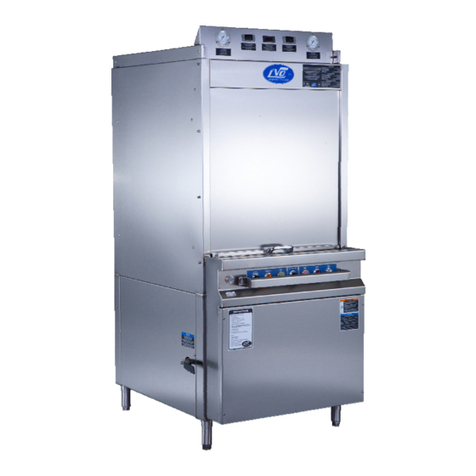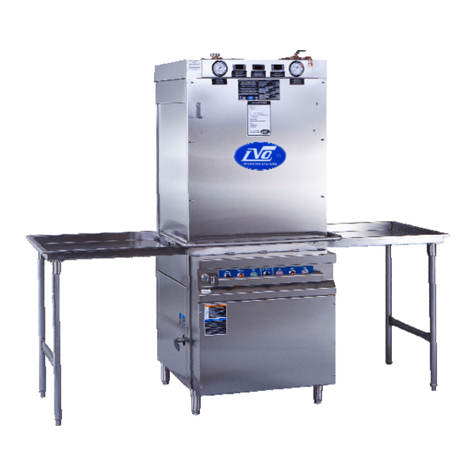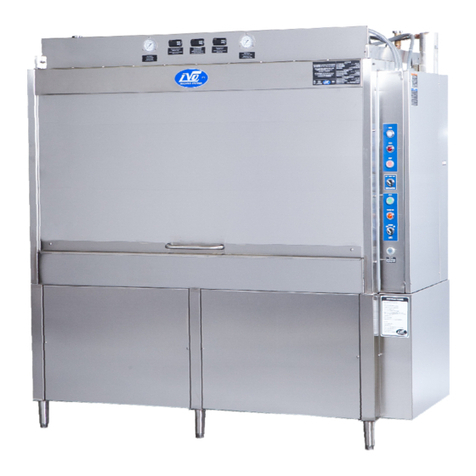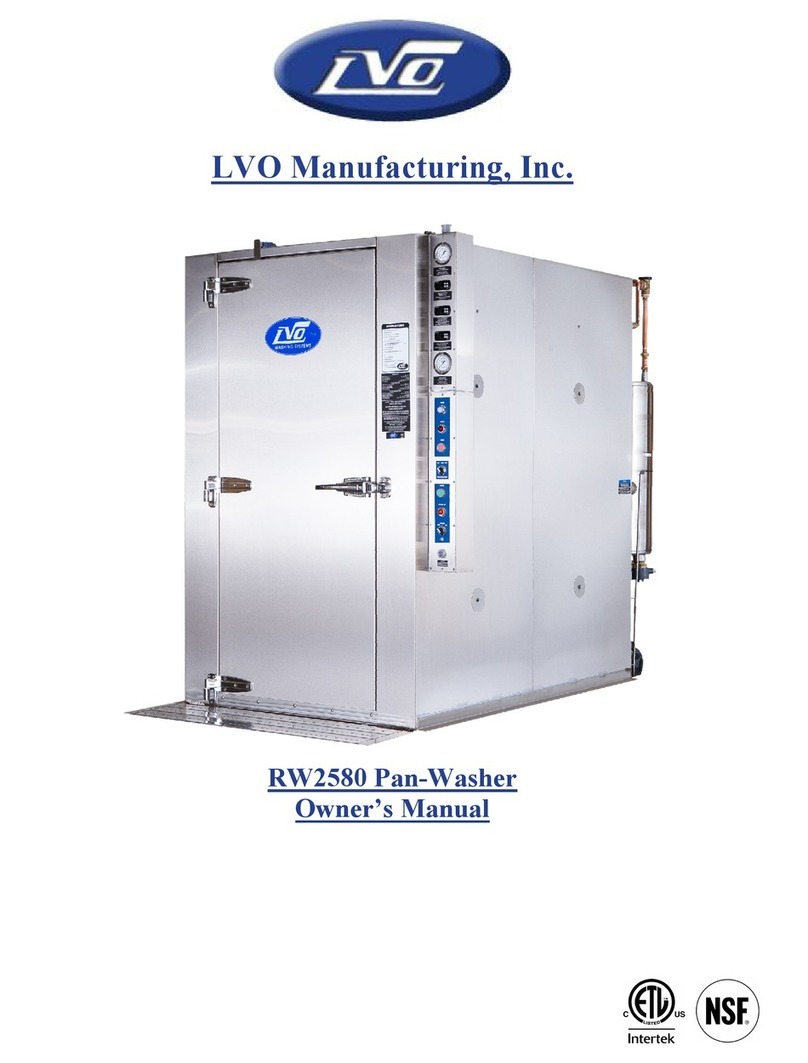
LVO Manufacturing, Inc.
LVO Manufacturing, Inc.LVO Manufacturing, Inc.
LVO Manufacturing, Inc.
808 N. 2
nd
Avenue E., P.O. Box 188
ock apids, IA 51246
www.lvomfg.com
(712) 472-3734
1-800-346-5749 Fax (712) 472-2203
__________________________________________________________________________________________________________________________________________________________________
8
Installati n Instructi ns
Step 1 READ: Read and understand these instructions thoroughly before attempting any part of the
installation process.
WARNING: N t f ll wing these instructi ns may v id warranty, cause
damage t the equipment and/ r cause injury t any ne inv lved in the
installati n r perati n f this machine.
A copy of the installation instructions and start-up procedure is printed on the sheet attached to
the side of the machine. EVERYONE involved with the installation must be familiar with all
aspects of the installation procedure.
Step 2 POSITIONING: The factory recommends leaving as much room as possible around the
machine for future service work. No less than 6” should be allowed along the sides of the
machine (36” for side with control box), and no less than 2” between the rear of the machine
and the wall. Extra room around the machine will facilitate cleaning the washer area.
Step 3 UNCRATING: Leave the machine fully crated until the washer is placed in the location
where it is to be installed. After the washer is uncrated, remove the banding that holds the
door weight stationary on the back of the machine. This will allow the door to open. Inside
you will find the accessories for the machine. Among these will be the fan (if ordered) and the
legs. Remove the machine from the pallet, install the legs, and level the machine. The legs are
adjustable by turning the small end one way or the other.
Step 4 DRAIN: Provisions for the drain should be made next. The pan washer has a copper drain
located as shown on the drawings (see specifications page for drain size). The drain should be
plumbed according to local code. Local ordinance may require a grease trap, vent, and/or a
floor sink. If required, these should be installed before the machine is installed. It is strongly
recommended that unions be used to allow the machine to be easily moved. Failure to do so
may void the warranty.
Step 5 WATER SUPPLY HOOK-UP: The factory recommends 40°F hot water at the machine
(see specifications page for water line size). This may require a dedicated water heater for the
pan washer. If hard water is present, the manufacturer recommends installing a water softener
or calcium filter. Hard water deposits will shorten the life of many of the components on the
pan washer, resulting in higher maintenance costs. Please note that a union is installed at the
point of hook-up (see drawings). This will allow the machine to be moved for service and
cleaning. The customer must furnish a shut-off valve on the supply side of the union. This
shut-off should be easily accessible to the operator of the machine. Additionally, if the



































